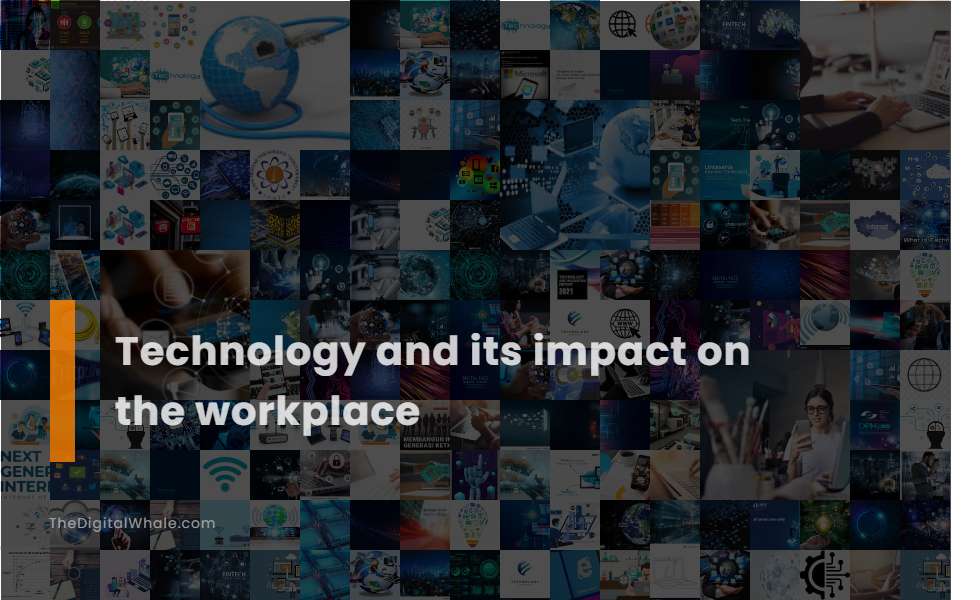Technology and Its Impact On the Workplace
What are some of the major implications of hyper-automation on the workplace? What is OpenMind Technology? Let's find out more about Technology and Its Impact On the Workplace.

Distractions and Reduced Productivity: Technology can cause significant distractions, leading to reduced productivity and increased stress.
In the modern workplace, digital distractions like emails, instant messaging, and the ever-present lure of social media have become significant barriers to productivity. These interruptions occur with alarming frequency, often pulling employees away from their tasks nearly 14 times a day. The result is a noticeable dip in productivity, accompanied by heightened stress levels and diminished employee morale and satisfaction. Furthermore, such distractions contribute to a loss of approximately 2.1 hours daily per employee, impacting overall efficiency and work quality. This constant connectivity not only derails focus but also escalates stress and burnout levels, challenging organizations to find ways to mitigate these disruptions. For insights on how to tackle this pervasive issue, [Vorecol](https://vorecol.com/blogs/blog-the-impact-of-digital-distractions-on-productivity-how-to-stay-focused-8824) offers practical strategies to help employees stay focused in an increasingly digital world.
Addiction to Electronic Gadgets: Constant use of electronic gadgets can lead to addiction, affecting mental and physical health.
Constant use of electronic gadgets can lead to tech addiction, blurring the lines between work and personal life, increasing stress, and causing employee burnout, diminished job satisfaction, and reduced overall well-being. Excessive and compulsive use of these devices, such as smartphones and social media, can result in symptoms like inability to control use, neglect of responsibilities, and physical symptoms like eye strain and disrupted sleep, negatively impacting mental and physical health. To explore these issues more deeply, you can learn about the impact of tech addiction on work in 2024, where these challenges are discussed with potential strategies to mitigate their effects.
Health Issues: Overuse of gadgets can result in health problems such as carpal tunnel, bulging discs, stress, and sleep disorders.
The overuse of gadgets in the workplace can lead to a multitude of health issues, including carpal tunnel syndrome, bulging discs in the neck and back, stress, damaged eyesight, sleep disorders, depression, and weight gain. These conditions significantly affect an employee's performance and overall well-being. Moreover, prolonged use of technology at work contributes to additional health problems such as musculoskeletal issues, eye strain, and the risks associated with a sedentary lifestyle, including obesity and cardiovascular diseases. Mental health is also impacted, with many experiencing stress, burnout, and sleep deprivation. For more insights into how these factors affect the workplace, visit Corporate Wellness Magazine for a comprehensive understanding of the consequences technology may pose to physical and mental health at work.
Automation and Job Loss: Automation poses a threat to job security, with predictions of significant job losses in various industries.
Automation presents a significant threat to job security, particularly in sectors that involve routine, repetitive, or manual tasks, leading to job displacement and necessitating workforce adaptation alongside reskilling initiatives to alleviate its adverse effects. While automation has the potential to create as many jobs as it erases over time, it also amplifies labor market inequality. With the rise of advanced robotics and artificial intelligence, there is a possibility that millions of jobs across a wide array of professions, including those in healthcare, law, and finance, could be displaced, exacerbating existing inequities. A study by McKinsey & Company forecasts that around 45 million people, representing a quarter of the workforce, could lose their jobs to automation by 2030, underscoring automation as the single greatest threat to the American labor market. For a comprehensive understanding of the impact of automation on job loss and strategies to counteract these trends, visit ServiceAutomation.org to explore detailed insights and data.
Need for Upgraded Skills: Technology drives the need for employees to acquire new skills, including soft skills and technical abilities.
Technology is driving a significant need for employees to acquire new skills, including advanced technological skills, social and emotional skills, critical thinking, and creativity, as automation and AI integrate into the workplace, necessitating major retraining efforts to meet these skill demands. According to a report by McKinsey & Company, the race to deploy AI and elevate skill levels is becoming more crucial in Europe and beyond.
Related:
What is the future of technology in the classroom? What are the benefits of using technology in the classroom? Let's find out more about The Future of Technology In the Classroom.
Enhanced Communication and Collaboration: Technology improves communication and collaboration through tools like email, instant messaging, and videoconferencing.
Technology has significantly enhanced communication and collaboration in the workplace through tools like email, instant messaging platforms such as Microsoft Teams and Slack, and video conferencing like Zoom, enabling real-time interactions, efficient file sharing, and seamless collaboration regardless of physical location. These advancements have revolutionized corporate communication, allowing for a quick, efficient, and accessible exchange of information, fostering collaboration, and bridging geographical gaps to enhance teamwork and productivity. To learn more about the benefits of technology in the workplace, visit the comprehensive article on Technology in the Workplace.
Increased Efficiency and Productivity: Technologies like project management software, analytics tools, and cloud storage enhance workflows and productivity.
Technology has significantly increased efficiency and productivity in the workplace by automating repetitive tasks, enhancing collaboration through Cloud-based Project Management Software, and providing real-time analytics and automation tools that streamline workflows and free employees to focus on more strategic work. This type of software enhances efficiency by offering real-time communication and collaboration tools, along with customizable dashboards and reporting features that aid in informed decision-making and strategic planning, ultimately transforming the modern workplace landscape.
Remote Work Facilitation: Technology enables remote work, with tools like virtual meetings, cloud storage, and instant messaging.
Technology has significantly facilitated remote work by providing a range of tools that enable seamless collaboration and communication regardless of location. Cloud-based productivity suites, virtual private networks, and video conferencing apps such as Zoom and Microsoft Teams are instrumental in this transformation. Moreover, project management tools like Asana and Trello have become essential for managing workflows across distributed teams. As highlighted on the YaRooms website, these technologies collectively ensure that remote work is not only feasible but also efficient and productive. Additionally, cloud storage solutions like Google Drive and OneDrive enhance real-time collaboration and asynchronous communication, fostering a highly connected and effective remote working environment.
Cybersecurity Threats: The shift to remote work has increased cyber threats due to the use of personal devices and unsecured networks.
In the current landscape, the shift to remote work has significantly heightened cybersecurity threats, with many organizations experiencing security breaches attributed to remote workers. This new work environment has seen a notable rise in phishing attacks, malware, and ransomware aimed at unsecured home networks and personal devices. Such circumstances have led to a dramatic increase in cybercrimes and a substantial jump in the average cost of data breaches, underscoring the vulnerabilities inherent in remote work setups. For further insights on these challenges and potential solutions, visit the article on Insider Threats in the Age of Remote Work.
Impact on Work-Life Balance: Technology can blur the lines between personal and professional life, leading to work exhaustion, stress, and burnout.
Technology can blur the lines between personal and professional life, leading to an "always-on" culture that creates work-related stress, hinders the ability to disconnect, and results in increased stress, burnout, and a decline in overall well-being. The constant connectivity and expectations of immediate responses can invade personal time, reduce personal fulfillment, and lead to increased stress, burnout, and decreased job satisfaction. This scenario highlights the need for clear boundaries and a supportive work culture to maintain a healthy work-life balance. For further insights, the impact of technology on work-life balance is comprehensively covered on Gray Group International. Technology's ability to facilitate constant connectivity can encroach into personal time, but setting clear boundaries and using technology judiciously can help mitigate these negative impacts and support a healthier work-life balance.
Related:
What are the effects of technology on teenage anxiety, depression and suicide? Does technology addiction cause negative physical health effects? Let's find out more about Technology Addiction and Its Effects On Mental Health.
